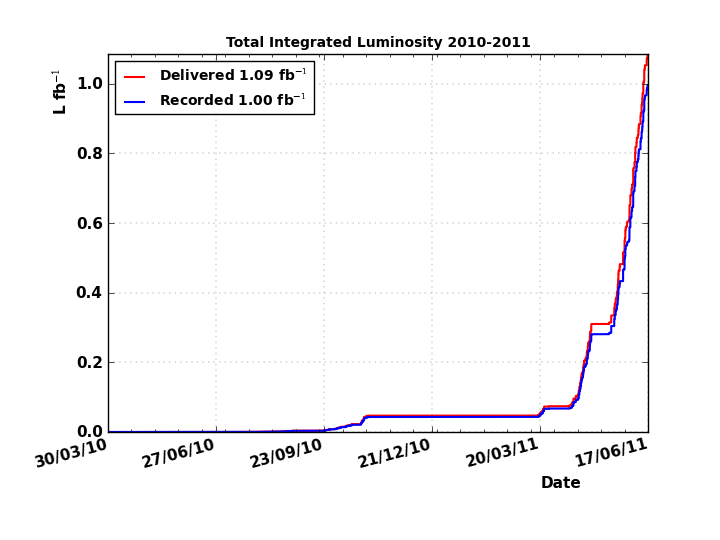
This year's LHC physics run started in March. Since then the machine has broken many records, bringing its luminosity — the number of proton-proton collisions per second — to much higher levels than expected for this year. CMS now can take as much collision data in a single day as it accumulated during all of 2010. While taking massive amounts of new data, the CMS collaboration continues to publish new results from last year's data set.
The LHC team has found ways of continuously increasing the luminosity level. Because of this, we will exceed in the next few days our original luminosity goal of 1 inverse femtobarn of collision data for this run, which ends in October. We expect to get multiples of that data by the end of this run.
The LHC now is running with over 1,000 proton bunches in each beam, and the number of protons per bunch already is approaching the machine design value. Running at such high intensities increases our productivity and scientific output, but it also brings new challenges to the experiment, such as selecting the collision events that need to be recorded and dealing with multiple collisions taking place almost simultaneously in our detector. Typical collision events not only contain overlays of interactions from several proton-proton collisions within two bunches, but also from neighbouring bunches. Despite the challenge of reconstructing these very complex events, the software and computing performance continues to be excellent and the data quality remains very high.
Entering a new energy and luminosity regime has been very exciting. Large amounts of new data arrive every week and we analyse and scrutinise them for hints of signals beyond the expected Standard Model of physics. CMS will show its first results with this year's data at the summer conferences, and we expect a rich harvest of exciting physics.
Submitted by: Lothar Bauerdick
This article originally appeared in Fermilab Today on 15th June.
- Log in to post comments

